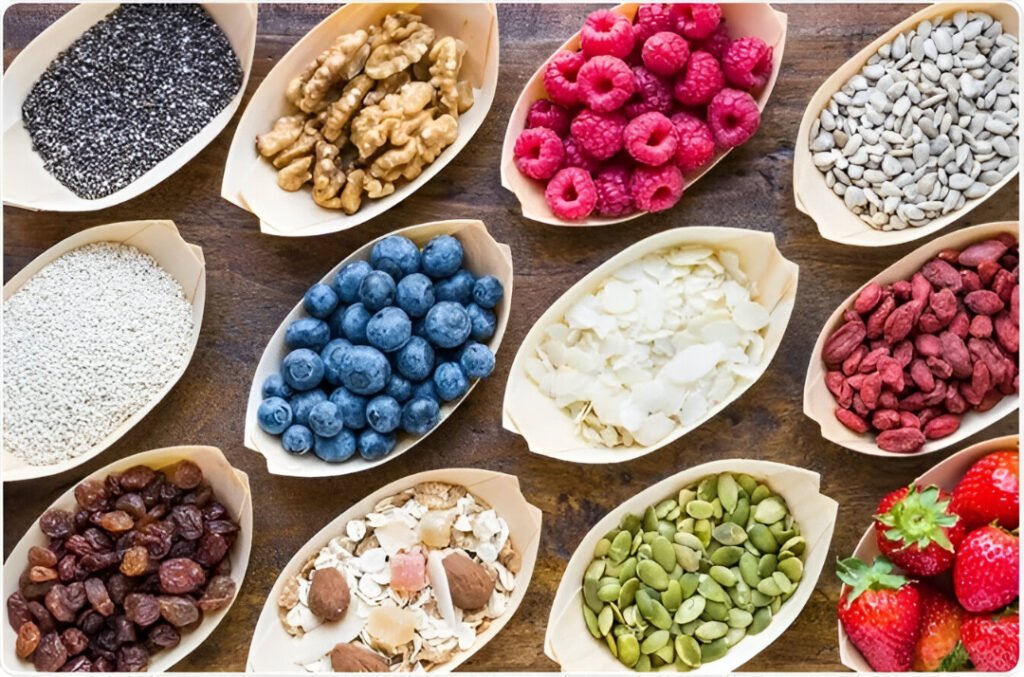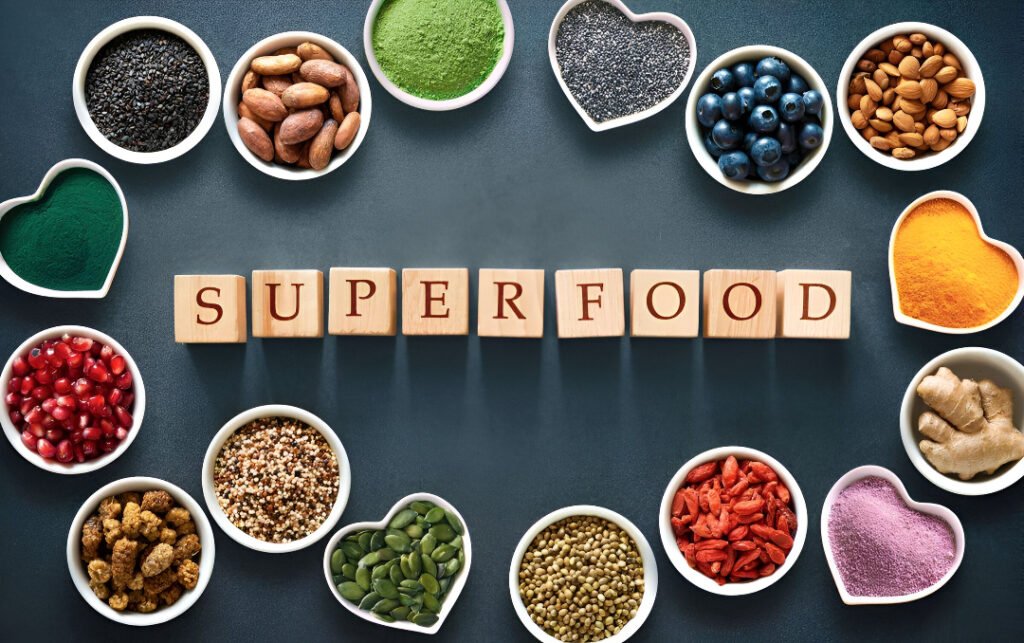Extra-virgin olive oil (EVOO): a daily swap with longevity upside
Large U.S. cohorts show higher olive oil intake is linked with lower all-cause mortality; replacing butter or mayo with olive oil improves the association. Newer analyses also tie daily olive oil to a lower risk of dementia-related death. Practical play: use 1–2 tablespoons daily to dress vegetables, finish soups, or sauté—as a replacement for animal fats.
Fermented foods: microbiome allies—handle with nuance

2025 reviews highlight how yogurt, kefir, kimchi, idli/dosa batter, sauerkraut, and tempeh deliver live microbes and bioactives that can increase gut resilience and produce beneficial compounds (like short-chain fatty acids). That said, one 2025 paper linked long-term high intake with reduced diversity in some contexts—so variety matters. Aim for one small serving daily, rotate types, and watch sodium if you’re salt-sensitive.
Pulses & millets: fiber, protein, and steady blood sugar
Beans, lentils, chickpeas, and peas (pulses) continue to show cardiometabolic benefits—from cholesterol lowering to improved satiety (evidence quality ranges from low to moderate, but trends are favorable). For South Asian and African staples, millets (e.g., ragi, bajra, and jowar) carry a naturally low glycemic index; a 2024 clinical trial in gestational diabetes found millet inclusion improved glycemic control over one month. Build plates around 1 cup cooked pulses or ½–1 cup cooked millet most days.
Berries (especially blueberries): polyphenol punch for vessels and metabolism

Meta-analyses and state-of-the-science reviews in 2023–2024 report improvements in endothelial function, diastolic blood pressure, and selected cardiometabolic markers with blueberry intake—likely via anthocyanins. Practical dose: ½–1 cup/day, fresh or frozen, blended into yogurt or oats.
Seaweed: micronutrients with a safety label
Seaweeds supply iodine, soluble fibers (alginate and fucoidan), and even small amounts of vitamin B12—useful for plant-forward eaters. Early evidence suggests benefits for cardiometabolic risk and glycemic control, but quality human trials remain limited. Keep servings small (e.g., 1–2 nori sheets or a sprinkle of dried flakes) and source reputable brands to avoid excess iodine and contaminants, especially if you have thyroid disease.
Flax & chia: ALA omega-3s plus viscous fiber
Recent meta-analyses show flaxseed can lower triglycerides, fasting glucose, and inflammatory markers (hs-CRP, IL-6), with mixed effects on LDL depending on dose/form. Chia offers similar ALA and fiber benefits. Try 1–2 tablespoons of ground flax (or chia) daily in smoothies, salads, or dals; grind flax for better absorption and increase fluids with chia.

Cocoa flavanols: promising, but don’t lean on chocolate.
In the large COSMOS randomized trial, cocoa extract did not significantly reduce total cardiovascular events, though a reduction in cardiovascular deaths was observed; cognition benefits came from multivitamins, not cocoa. If you enjoy it, use unsweetened cocoa (not candy bars) as an accent to oatmeal or smoothies—think of it as a polyphenol bonus, not a cure-all.
How to build a 2025 “superfood” plate (simple, sustainable, safe)
- Base: half your plate non-starchy vegetables; dress with EVOO.
- Protein & fiber: pulses (dal, chana, black beans) or tempeh most days; rotate millets for grains.
- Microbiome add-on: one fermented serving (yogurt/kefir/kimchi/idli batter). If histamine-sensitive or hypertensive, choose lower-sodium, fresh ferments.
- Color cue: daily berries; alternate with other deeply colored fruits to diversify polyphenols.
- Smart extras: ground flax or chia and a spoonful of unsweetened cocoa when desired.
- Seaweed sparingly: small portions, reputable sources; consult your clinician if you have thyroid issues.
These foods are adjuncts to an overall healthy pattern (Mediterranean-style or similar), physical activity, sleep, and stress care. People with kidney disease, thyroid disorders, or pregnancy or who are on anticoagulants should individualize choices (e.g., sodium in fermented foods; iodine in seaweed). When in doubt, bring this list to your registered dietitian or physician for tailoring.











